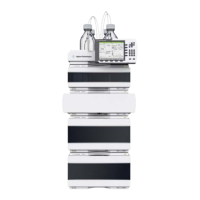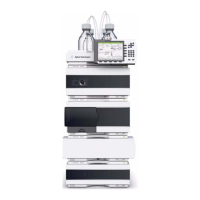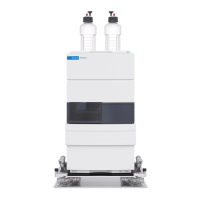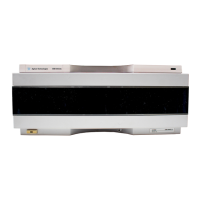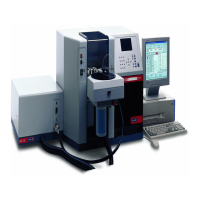270 1100 Series FD Reference Manual
8 Theory of Operation
Flash Trigger Voltage Supply
The flash lamp trigger assembly includes an ignition transformer which needs
a 160 V pulse to generate a short high voltage pulse (~ 10 kV) for a reliable
lamp ignition. A second lamp power supply transformer output is used to
generate this trigger voltage at both operating conditions.
Igniting the Flash Lamp
The flash lamp is a plasma discharge lamp with an energy-controlled intensity
operated at 74 Hz or 296 Hz. The applied voltage charges a capacitor array and
forms a controlled discharge voltage difference between lamp anode and
cathode. Then an additional ignition electrode is driven with a high ignition
voltage pulse to build up a small ionized channel from the ignition electrode to
the cathode. If this ionization is existent, the voltage difference between anode
and cathode leads to a flash discharge within a very short time (1
µs). After
the flash the system pauses the regulator to force the ionized path to break
down rapidly before charging the capacitors for the next cycle.
Flash Lamp Overcurrent Protection
A special firmware-controlled diagnostic circuitry shuts down the regulator
when the charge current exceeds a critical value. This may happen when the
output voltage lines are shorted. When an overcurrent condition is found, the
circuit stops the voltage regulator within the time between two flashes, and
the firmware reports an error signal when a restart of the regulator fails
again.
Flash Voltage Safety Switch
A safety switch stops the voltage regulator when the lamp cover is removed to
avoid high voltages on board when electronic parts are accessible.
